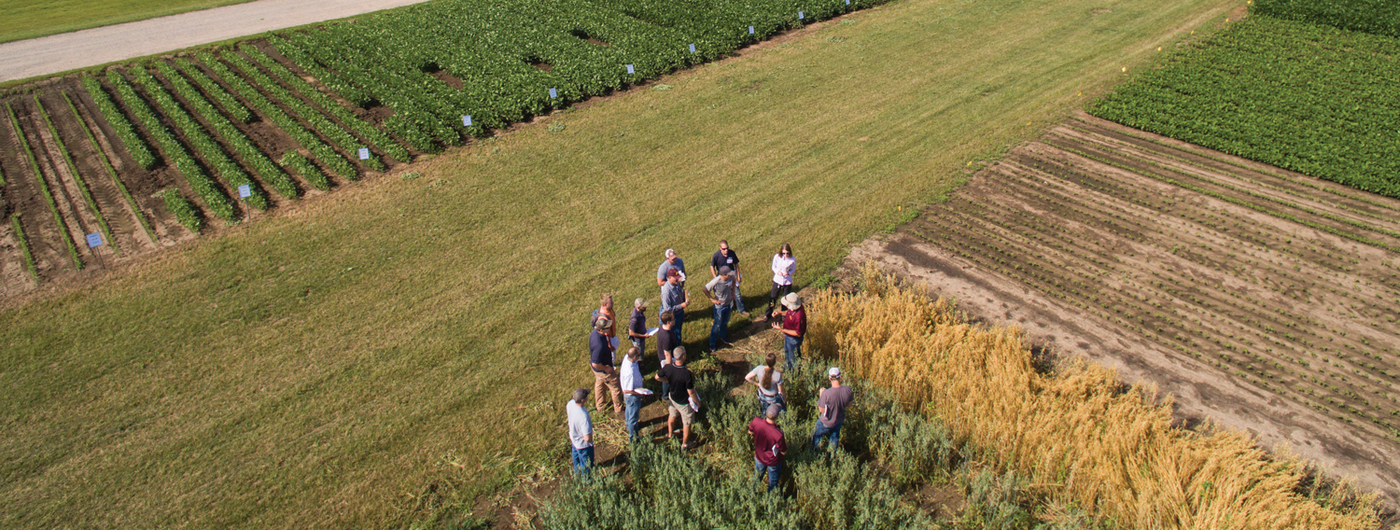When the Minnesota Department of Agriculture announced new restrictions on the herbicide dicamba in December 2017, Commissioner David Frederickson credited Extension researchers for advising the agency as it crafted a decision.
Dicamba has caused damage to soybeans and other crops when it has spread beyond some of the fields where it was sprayed. The new MDA restrictions include a June 20 cutoff date for using dicamba. It’s part of a strategy to reduce risk of dicamba drift—one that scientists will watch closely in the coming year.
Already a hot-button issue in some states, dicamba damage prevailed upon University of Minnesota Extension educators to address the issue with research-based information and communication.
Building trust based on science
“It’s our job to remain impartial,” says Jeff Gunsolus, Extension weed scientist and crops team leader. “It’s also important for farming communities to be able to bring the dicamba issue up and not bury it.”
Gunsolus and Extension crops scientist Roger Becker had previously worked with MDA, advising the agency on processes for reporting problems in crop production. Creating trust among farmers, crop consultants, educators and the state has been paramount.
“Reporting problems without finger-pointing has been essential,” Gunsolus says.
Preparing for unwelcome weeds
At its most aggressive, Palmer amaranth can grow up to three inches a day.
The open environment in which concerns can be reported had a significant test just a year before the dicamba situation worsened.
When the first sighting of Palmer amaranth occurred in 2016, it was the moment Minnesota’s ag community had dreaded.
It was also a moment for which the state was prepared. University of Minnesota Extension crop faculty and educators had spent the previous three years helping set the stage for the arrival of Palmer amaranth, a highly aggressive weed that resists herbicidal control. Fast-growing and big, Palmer amaranth can destroy up to 90 percent of a field’s yield potential. As of 2017, for instance, it had been located in 50 of Iowa’s 99 counties.
“We were able to respond quickly and effectively because of trust,” Gunsolus says. “All identifications of Palmer amaranth have come through the trusting relationships of crop advisers working with farmers and Extension and making reports to the MDA.”
To date, Palmer amaranth has been found—swiftly eradicated and regularly monitored—in four Minnesota counties. Its rarity so far gives Gunsolus guarded optimism. Herbicidal resistance, however, remains the underlying issue that makes agriculture vulnerable to invasive weeds.




